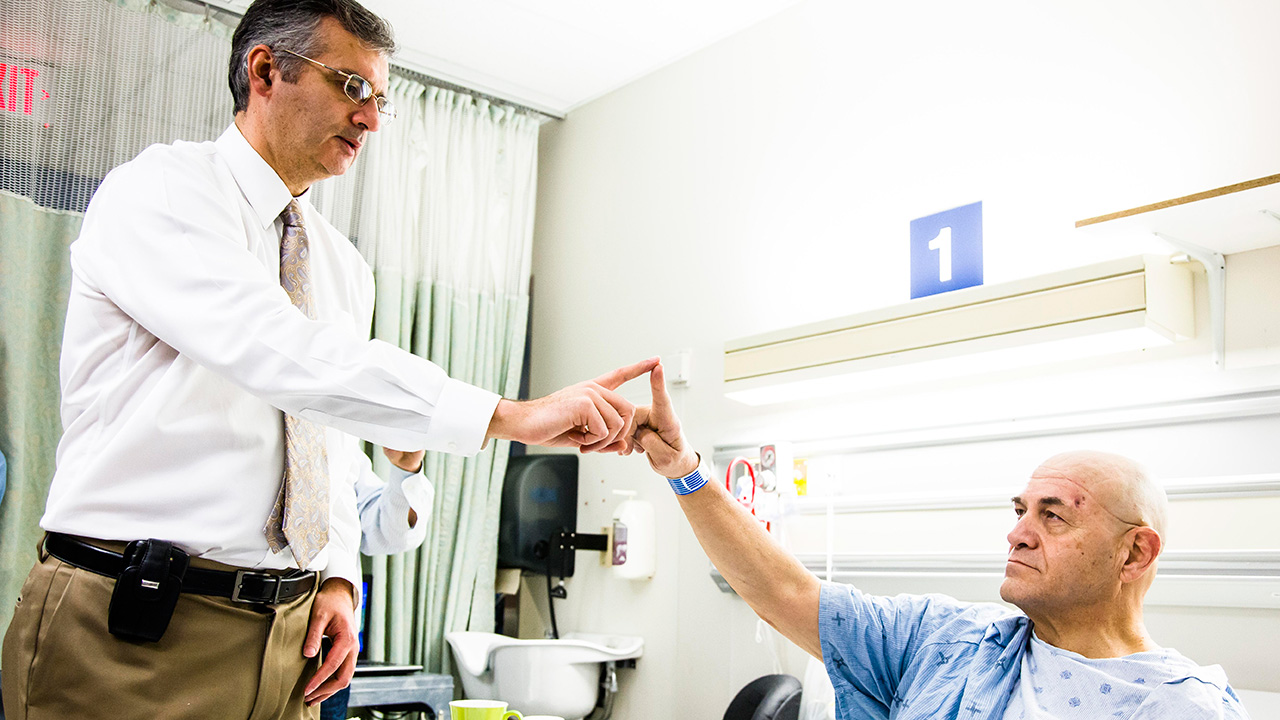Essential tremor

Tony Lightfoot (right) was one of six patients enrolled in the Sunnybrook trial whose essential tremor was treated successfully using MRI-guided HIFU. After the treatment, he was able to sign his name for the first time in a decade. Photo: Doug Nicholson.
Essential tremor is a neurological disorder that causes involuntary and rhythmic shaking. The condition can affect almost any part of the body but is seen most often in the hands. It is the most common movement disorder, affecting 3% of the population in Canada.
In 2012, scientists and neurosurgeons at Sunnybrook completed the first Canadian trial evaluating the use of high-intensity focused ultrasound (HIFU) to treat essential tremor. Neurosurgeon Dr. Michael Schwartz led the team in using MRI to guide high-intensity ultrasound waves to specific regions of the brain; there, the beams generated heat to destroy the lesions responsible for the tremor.
The success of this study helped to pave the way for an international, multicentre, randomized controlled trial, the results of which were published in August 2016 in the New England Journal of Medicine. Led at Sunnybrook by neurosurgeon and scientist Dr. Nir Lipsman, the researchers found that MRI-guided HIFU safely and effectively improved symptoms and quality of life of patients with moderate-to-severe essential tremor for whom medications were ineffective. Sunnybrook was the only Canadian site to participate in this study. Based on these results, Health Canada and the Food and Drug Administration in the U.S. have approved the noninvasive technology for treatment of medication-resistant essential tremor.



